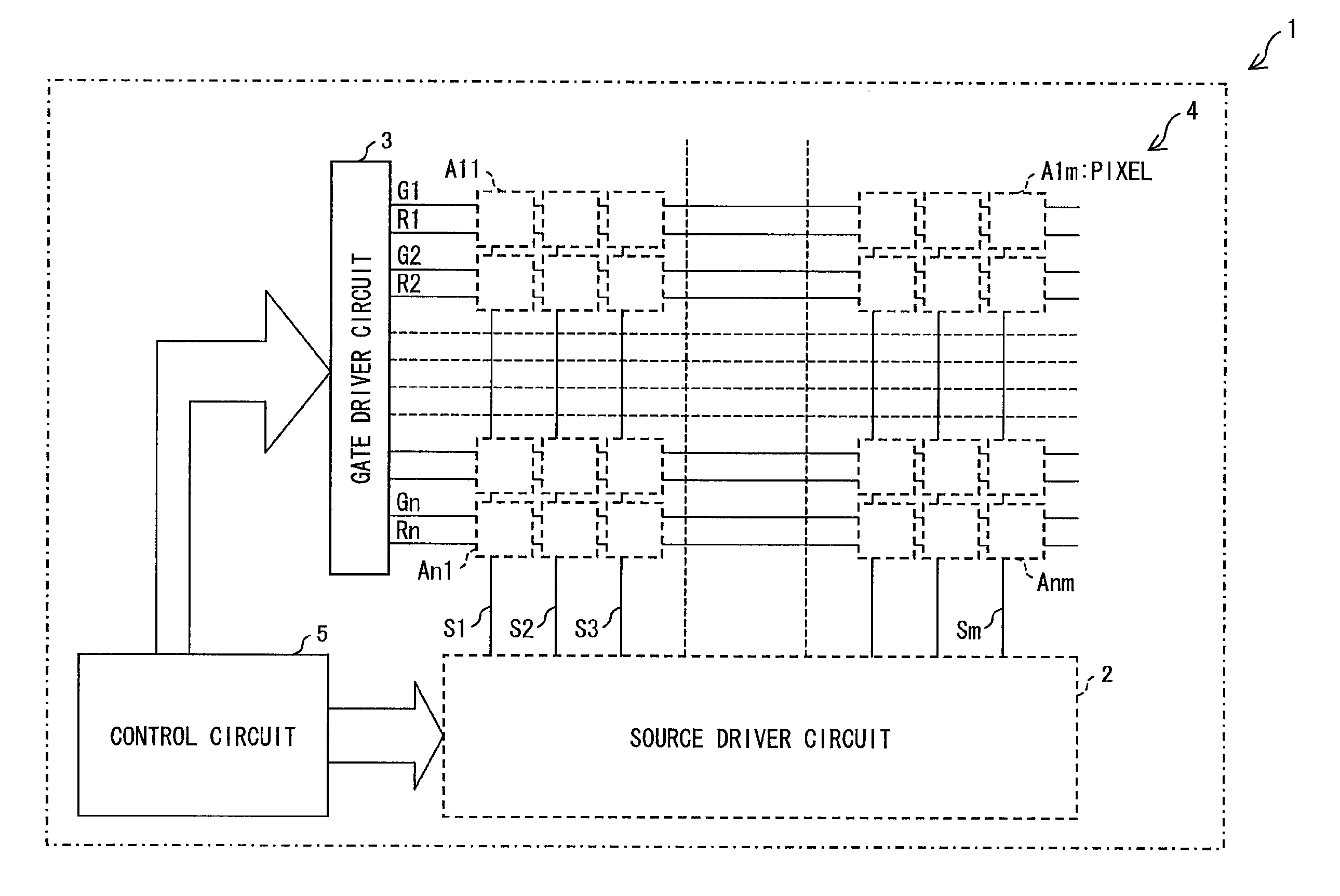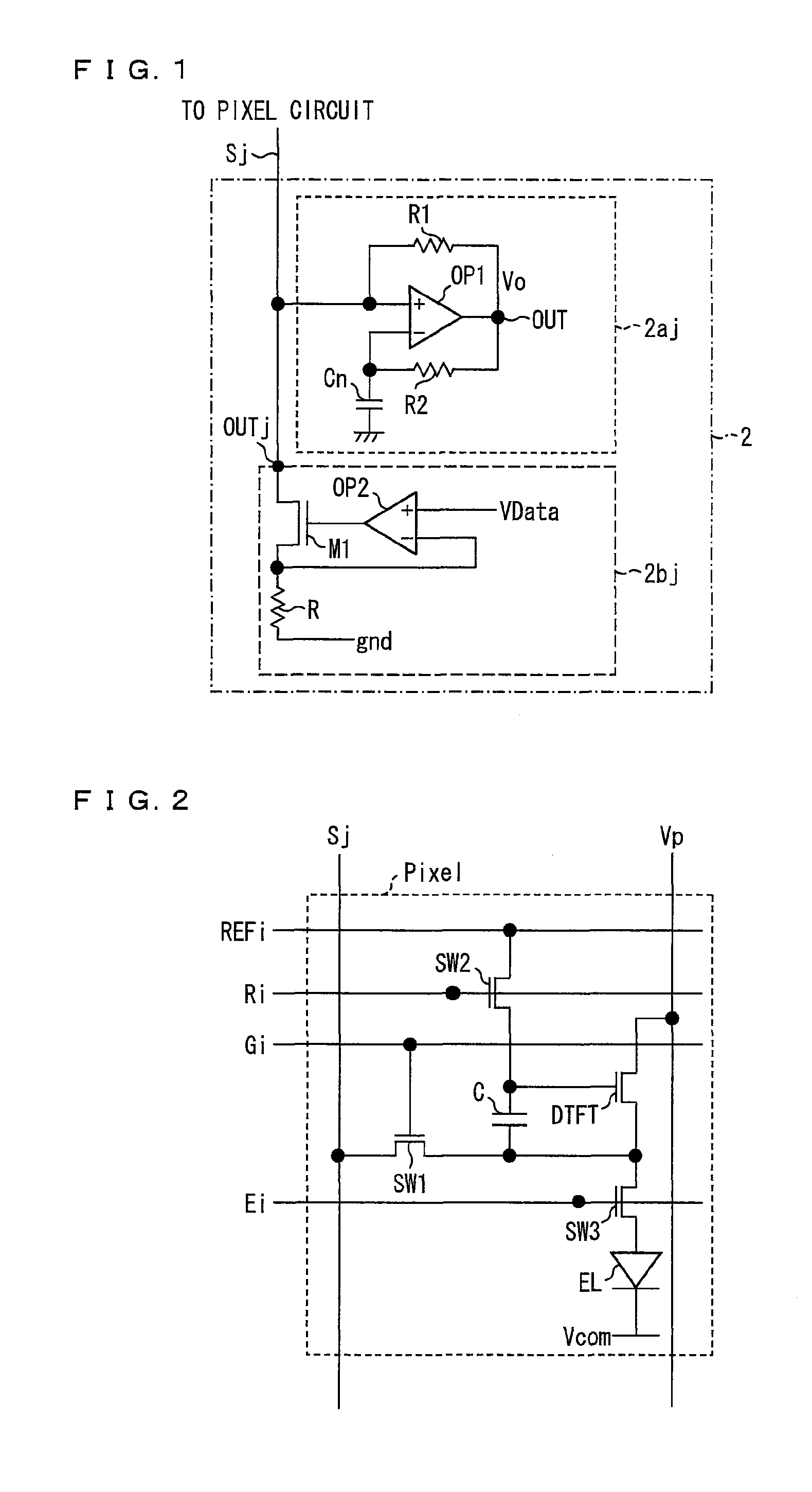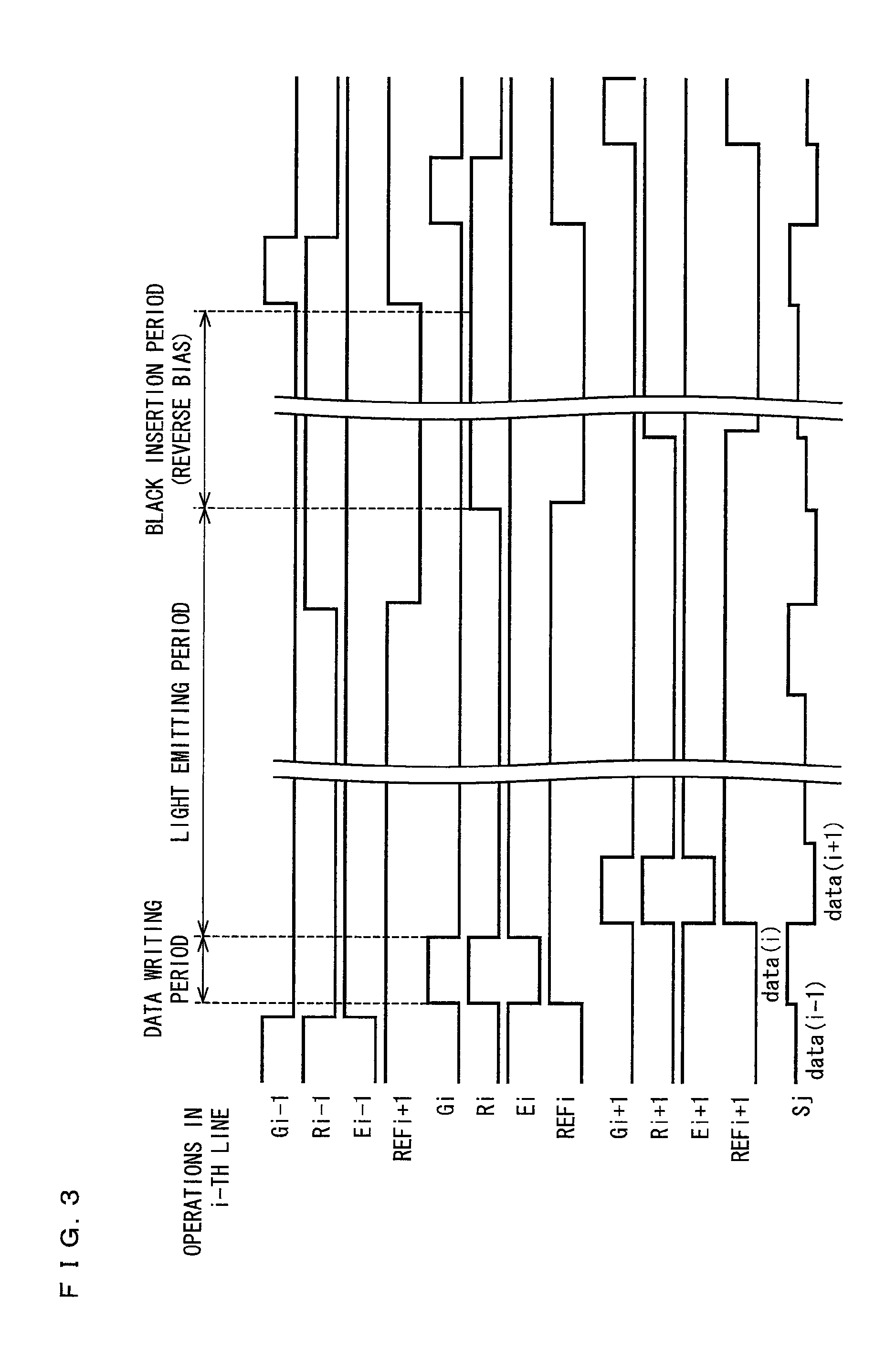Display device
a display device and display technology, applied in the field of display devices, can solve the problems of increasing the number of gray scales, requiring a higher definition image, and not developing a definite drive method
- Summary
- Abstract
- Description
- Claims
- Application Information
AI Technical Summary
Benefits of technology
Problems solved by technology
Method used
Image
Examples
embodiment 1
[0075]FIG. 1 illustrates how the output section of the source driver circuit 2 of the present embodiment is configured.
[0076]The output section includes, for each column (i.e., for each data signal line Sj), a negative capacitance circuit 2aj and a constant current circuit 2bj.
[0077]The negative capacitance circuit 2aj includes an operational amplifier OP1, resistors (resistor elements) R1 and R2, and a capacitor (capacitor element) Cn.
[0078]A non-inverting input terminal of the operational amplifier OP1 is connected with a corresponding data signal line Sj. Note here that, although the non-inverting input terminal is directly connected with the data signal line Sj, another element can be provided between the non-inverting input terminal and the data signal line Sj. Further, although the present embodiment describes with an example in which the operational amplifier OP1 is connected to each data signal line Sj, the operational amplifier OP1 can be connected only to one or each of s...
embodiment 2
[0101]FIG. 7 illustrates how an output section of the source driver circuit 2 of the present embodiment is configured.
[0102]The output section is different from the configuration of FIG. 1 in that the impedance element Z1 is a capacitor Cn, the impedance element Z2 is a resistor R2, and the impedance element Z3 is a resistor R1. The impedance element Z2 and the impedance element Z3 are resistor elements, which are of the same kind.
[0103]In this case, input impedance is represented, in the similar manner to Embodiment 1, by the following equation:
Zin=−((1 / jωCn) / R2)×R1
accordingly, the following negative capacitance is obtained:
Negative capacitance=−(R2 / R1)×Cn (3)
[0104]In this case, a condition (condition of stability of a system) for achieving negative feedback is as follows:
|Zn|<|Zin|
that is,
Cp>(R2 / R1)×Cn
where, Zn is a value of total impedance of pixels electrically connected with a data signal line Sj, which impedance is obtained while the data signal line Sj and the pixels ele...
embodiment 3
[0108]FIG. 8 illustrates how an output section of the source driver circuit 2 of the present embodiment is configured.
[0109]The output section is different from the configuration of FIG. 1 in that the impedance element Z1 is a capacitor C1, the impedance element Z2 is a capacitor C2, and the impedance element Z3 is a capacitor Cn. The impedance element Z1 and the impedance element Z2 are capacitor elements, which are of the same kind. The impedance element Z2 and the impedance element Z3 are capacitor elements, which are of the same kind.
[0110]In this case, the following negative capacitance is obtained in the similar manner to Embodiment 1:
Negative capacitance=−(C1 / C2)×Cn (5)
[0111]In this case, a condition (condition of stability of a system) for achieving negative feedback is as follows:
|Zn|<|Zin|
that is,
Cp>(C1 / C2)×Cn
where, Zn is a value of total impedance of pixels electrically connected with a data signal line Sj, which impedance is obtained while the data signal line Sj an...
PUM
 Login to View More
Login to View More Abstract
Description
Claims
Application Information
 Login to View More
Login to View More - R&D
- Intellectual Property
- Life Sciences
- Materials
- Tech Scout
- Unparalleled Data Quality
- Higher Quality Content
- 60% Fewer Hallucinations
Browse by: Latest US Patents, China's latest patents, Technical Efficacy Thesaurus, Application Domain, Technology Topic, Popular Technical Reports.
© 2025 PatSnap. All rights reserved.Legal|Privacy policy|Modern Slavery Act Transparency Statement|Sitemap|About US| Contact US: help@patsnap.com



